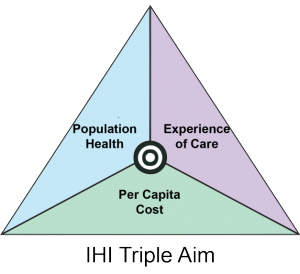 Adoption of telehealth, remote health monitoring, patient engagement platforms, mobile and digital health applications, and the emergence of the Internet of Things in health care will all be bolstered in 2016 based on health care providers’ having to do more with less (money, labor, resources). The value-based healthcare world — the migration of payment “from volume to value” — requires greater investment in information and communications technology that moves care to lower-cost sites, with lower-priced labor (as appropriate), and shifting greater clinical self-care and financial skin-in-the-game to patients.
Adoption of telehealth, remote health monitoring, patient engagement platforms, mobile and digital health applications, and the emergence of the Internet of Things in health care will all be bolstered in 2016 based on health care providers’ having to do more with less (money, labor, resources). The value-based healthcare world — the migration of payment “from volume to value” — requires greater investment in information and communications technology that moves care to lower-cost sites, with lower-priced labor (as appropriate), and shifting greater clinical self-care and financial skin-in-the-game to patients.
My annual health IT forecast was published yesterday in iHealthBeat, 2016: Technology Driving the Triple Aim. The key trends noted are:
- Providers are savvier, more critical health IT buyers
- Telehealth finds a business model
- Tele-mental health care to expand in 2016
- Remote health monitoring goes mainstream
- Growing evidence for mobile health
- More IoT in health care
- More breaches and hacking of information and devices
- Growing attention to privacy and personal health technologies and wearables
- Getting practical about interoperability
- Consumers get more health info-engaged
- Health ecosystem institutional barriers breaking down
- Health care acts on “information economics.”
Check it out and consider how these issues will play into your markets in the coming year and beyond. The Triple Aim — that ongoing journey toward improving health outcomes, enhancing peoples’ health care experience, and lower costs per person, is every health care stakeholder’s M.O. in 2016.
Health Populi’s Hot Points: This is my 10th annual health/tech forecast published by iHealthBeat, an online publication of the California HealthCare Foundation. Since I began writing this yearly tea-leaf reading at the intersection of health and information technology, the word “telemedicine,” which we used before the broader concept of “telehealth,” has appeared in my forecast going back a decade. That first forecast from 2005 also predicted that, “consumers’ demand for health information, price transparency and information services will create opportunities for developers and vendors. Consumers will bear a growing proportion of health costs — and not just for costs covered by employer-sponsored health insurance…Watch for “infomediaries” like Subimo and HealthGrades to thrive in this environment, with health plans and employers licensing content to fill in the information gaps for consumers who increasingly will be making crucial health care decisions for themselves and loved ones.”
Ten years later…it’s déjà vu.




 I'm in amazing company here with other #digitalhealth innovators, thinkers and doers. Thank you to Cristian Cortez Fernandez and Zallud for this recognition; I'm grateful.
I'm in amazing company here with other #digitalhealth innovators, thinkers and doers. Thank you to Cristian Cortez Fernandez and Zallud for this recognition; I'm grateful. Jane was named as a member of the AHIP 2024 Advisory Board, joining some valued colleagues to prepare for the challenges and opportunities facing health plans, systems, and other industry stakeholders.
Jane was named as a member of the AHIP 2024 Advisory Board, joining some valued colleagues to prepare for the challenges and opportunities facing health plans, systems, and other industry stakeholders.  Join Jane at AHIP's annual meeting in Las Vegas: I'll be speaking, moderating a panel, and providing thought leadership on health consumers and bolstering equity, empowerment, and self-care.
Join Jane at AHIP's annual meeting in Las Vegas: I'll be speaking, moderating a panel, and providing thought leadership on health consumers and bolstering equity, empowerment, and self-care.